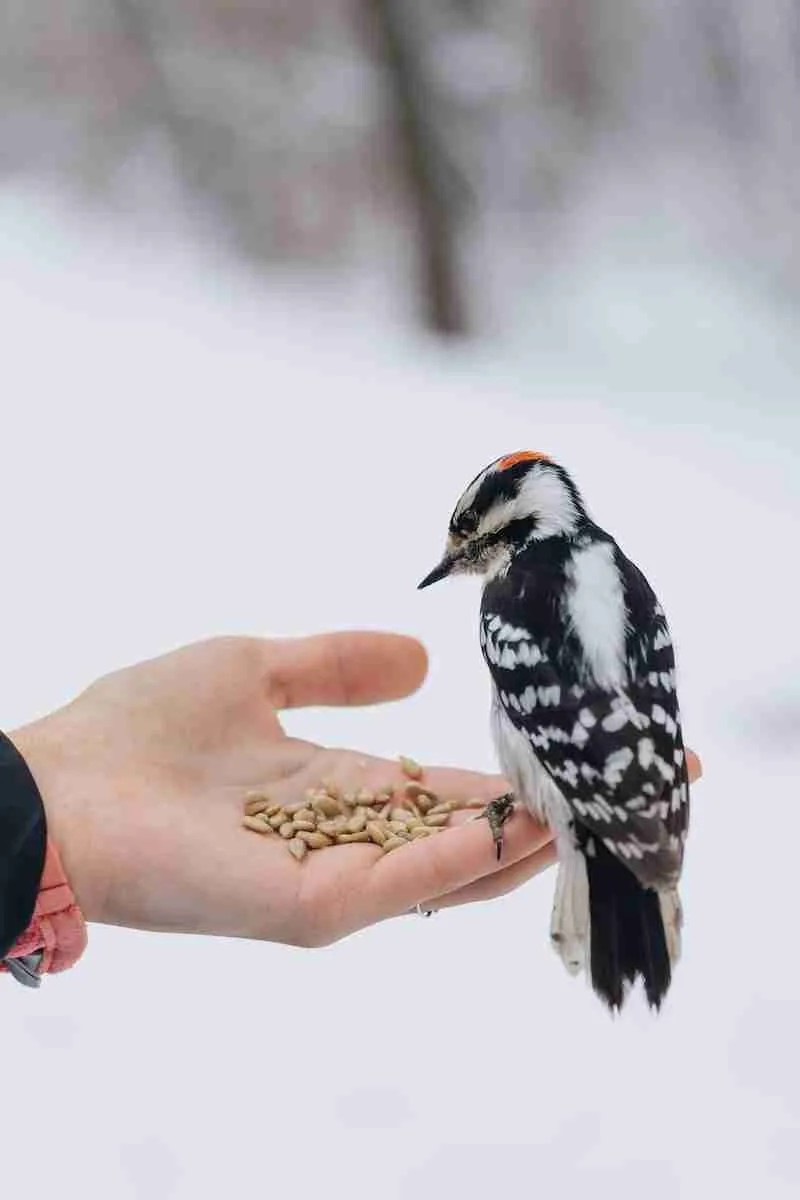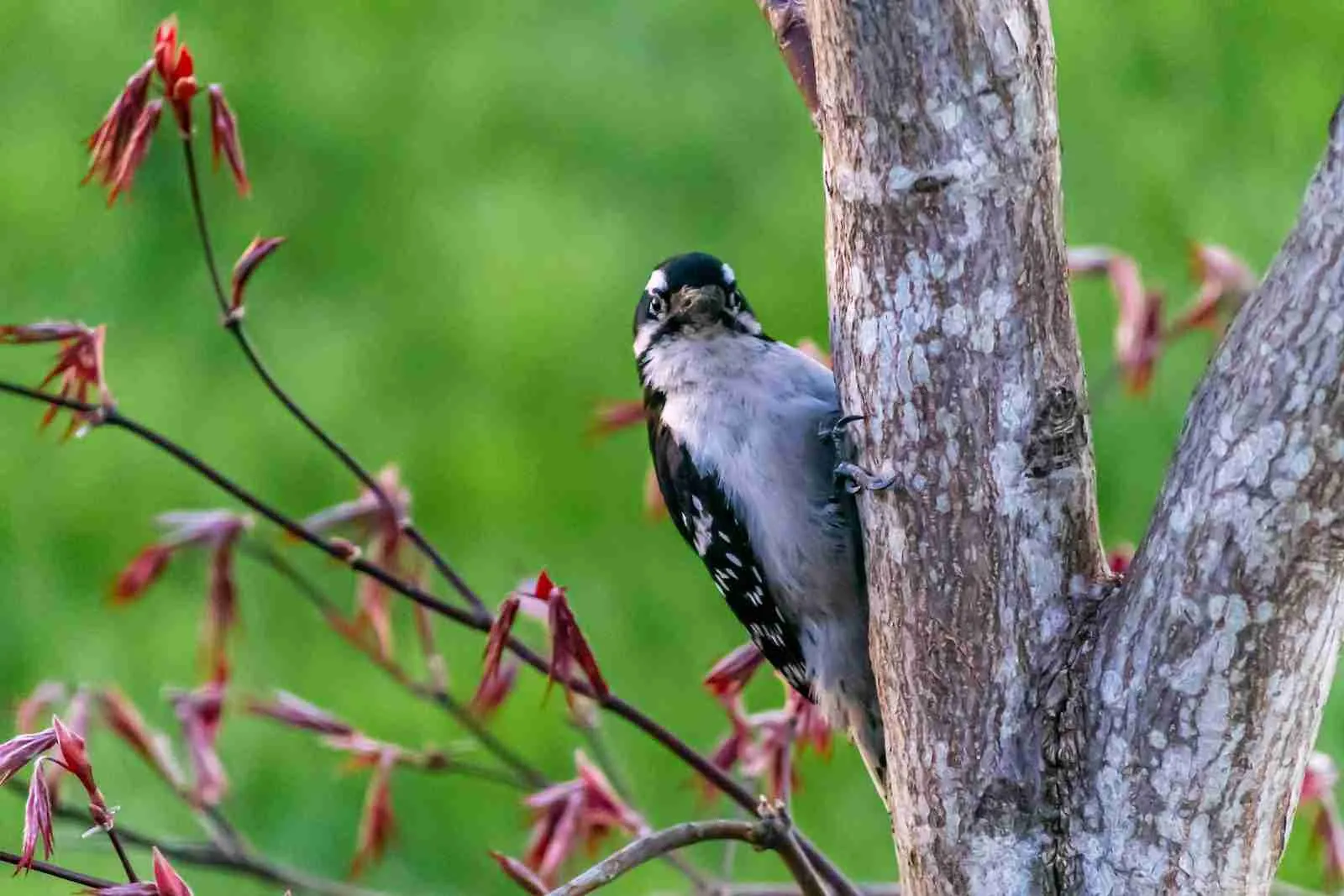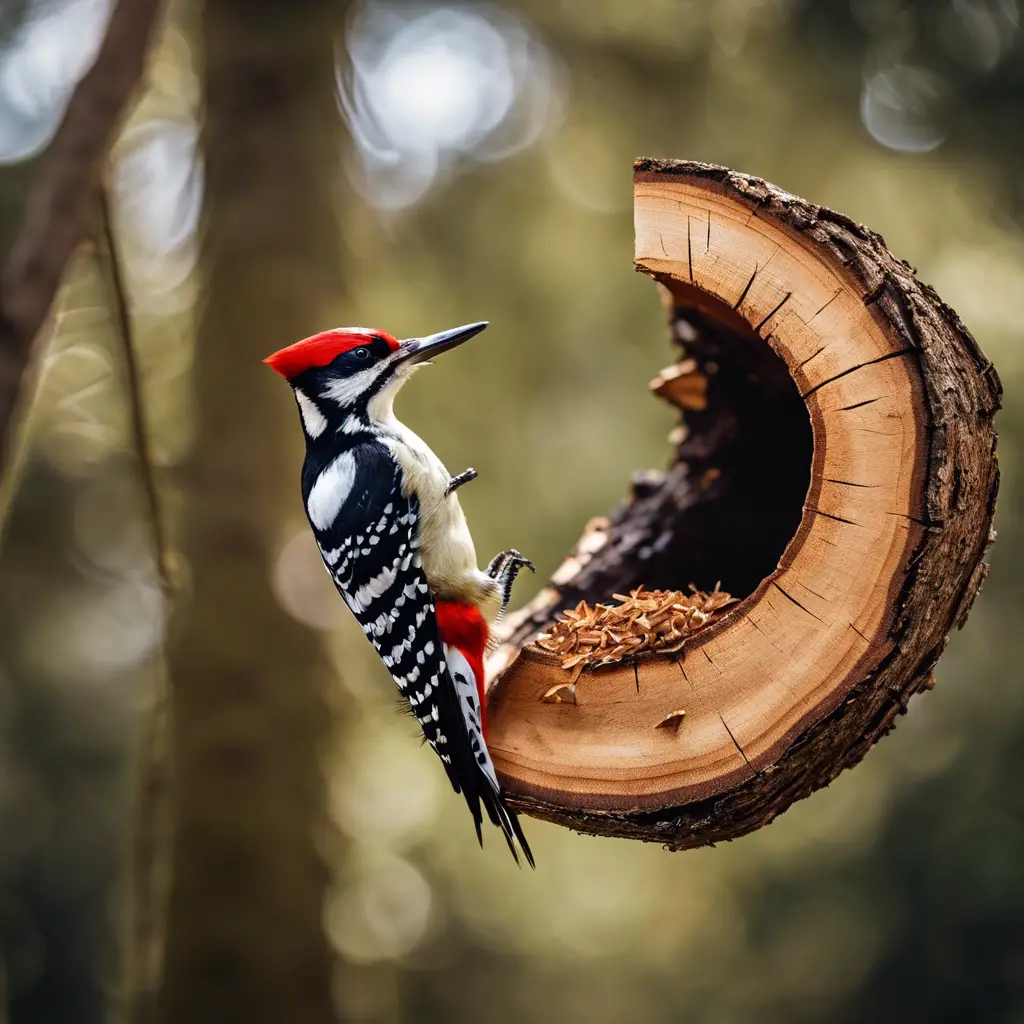Mississippi State is home to a variety of woodpecker species. Woodpeckers are one of the most interesting and beneficial bird families that live in our state. They play an important role in keeping our forests healthy by eating insects and helping to create new trees. In this blog post, we will discuss the different types of woodpeckers that call Mississippi State home!
We’ll provide photographs and important data on the most frequent birds seen in Mississippi. The information was obtained only from reputable sources and double-checked with an Ornithologist. These are the most seen woodpeckers in Mississippi.
Most common Woodpeckers in Mississippi
Red-bellied Woodpecker
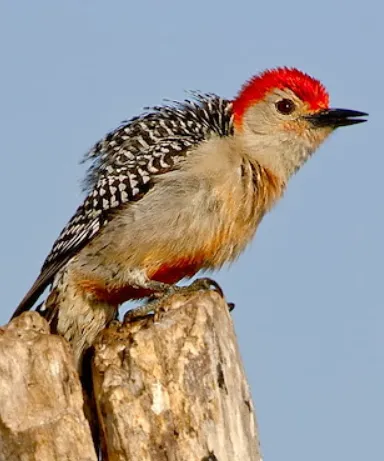
The Red-bellied Woodpecker is a medium-sized woodpecker that ranges in length from 11 to 14 inches. They have a long, black tail and a characteristic red patch on their bellies. This species can be identified by its white stripe down the middle of its head and its dark wings.
The Red-bellied Woodpeckers are native to the eastern United States and southern Canada but have been spotted as far west as Colorado, where it was introduced for conservation purposes.
They are found in a variety of habitats such as deciduous forests and woodlands with open areas or edges near water sources like ponds or streams.
These birds feed on insects by pecking at them with their strong beaks, but they will also eat sunflower seeds and fruits if available. The Red-bellied Woodpecker is a resident species in Mississippi State so you don’t have to worry about bird feeders during the winter months!

Red-headed Woodpeckers
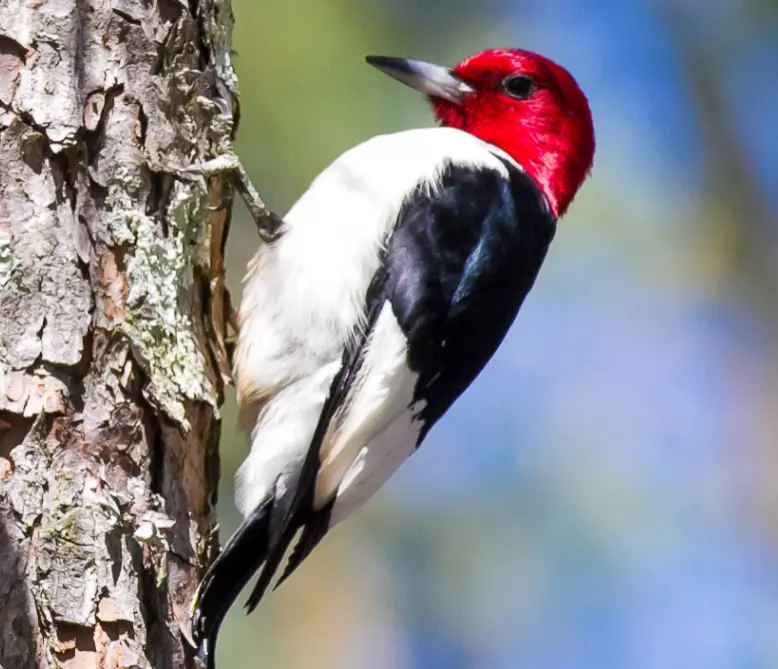
The Red-headed Woodpecker is a striking bird that can be easily identified by its bright red head and black body. This woodpecker ranges in length from 11 to 14 inches and has a long, black tail.
They are found in open areas near deciduous forests, such as fields and meadows, where they feed on insects, fruits, and sunflower seeds.
Red-headed Woodpeckers are cavity nesters and will often use old woodpecker holes to nest in. They are monogamous birds and the male helps incubate the eggs and take care of the young chicks.
These woodpeckers can be found throughout Mississippi State during the breeding season. They will migrate south in the winter months when food becomes scarce!

Woodpeckers: Picoides
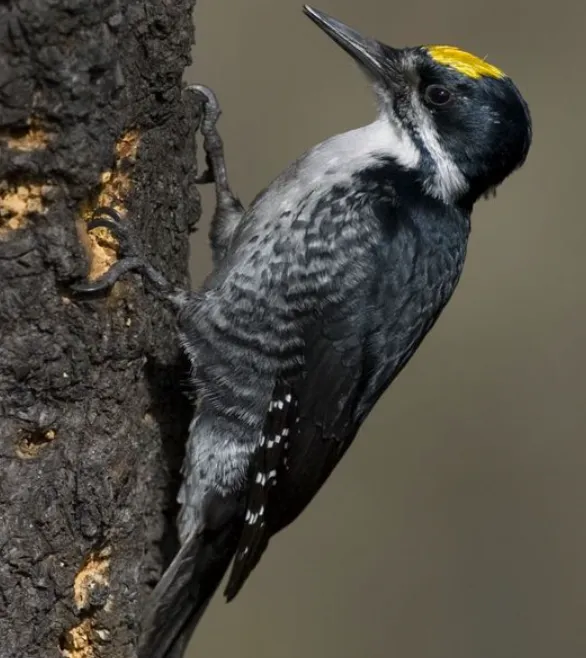
Picoides woodpeckers are small birds with short, stubby bills. They have large eyes and rounded heads that give them a cute appearance. These woodpeckers feed on insects by pecking at them with their strong beaks, but they will also eat sunflower seeds and fruits if available.
Picoides can be found throughout Mississippi State during the breeding season. They will migrate south in the winter months when food becomes scarce!
The Picoides woodpecker family is found mainly in North America and consists of three genera: Picumna, Dryobates (Woody), and Centurus (Tiny). These birds feed on insects by pecking at them with their strong beaks, but they will also eat seeds and fruits if available.
Picoides woodpeckers can be identified by their small size, large eyes, and rounded heads. They are found throughout Mississippi State during the breeding season. They will migrate south in the winter months when food becomes scarce!

Yellow-bellied Sapsucker
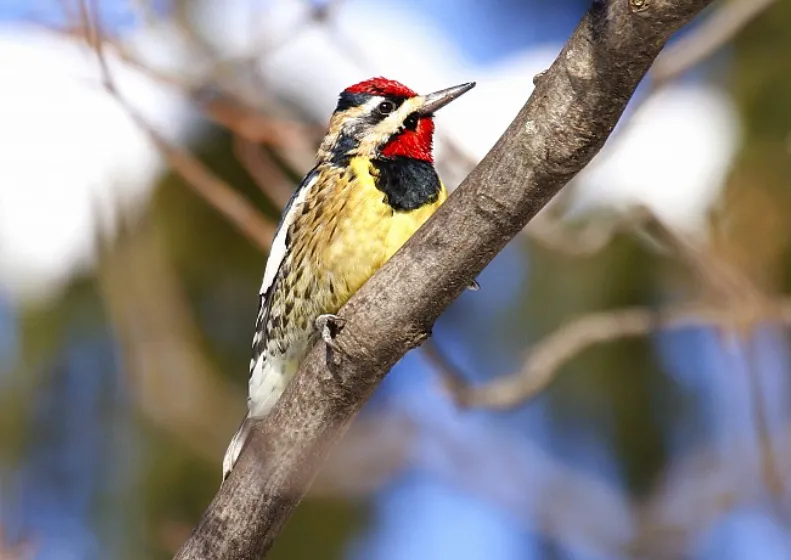
The Yellow-bellied Sapsucker is a medium-sized woodpecker that ranges in length from 11 to 14 inches. They have an olive back with yellow underparts and black stripes on their face.
The male has red markings on his throat, while the female lacks these markings completely but still shows some degree of coloration due to her olive back.
The Yellow-bellied Sapsucker is a unique woodpecker in that it feeds on sap from trees as well as insects. They are found in a variety of habitats such as deciduous forests, woodlands, and orchards. These birds can be identified by their black and white stripes on their face and their long, black tail feathers.
The Yellow-bellied Sapsucker is a resident woodpecker species in Mississippi State so you don’t have to worry about feeding them during the winter months!
They are attracted to sapsucker holes that they drill into trees and will feed on the sap that oozes out of these holes.

Northern Flicker
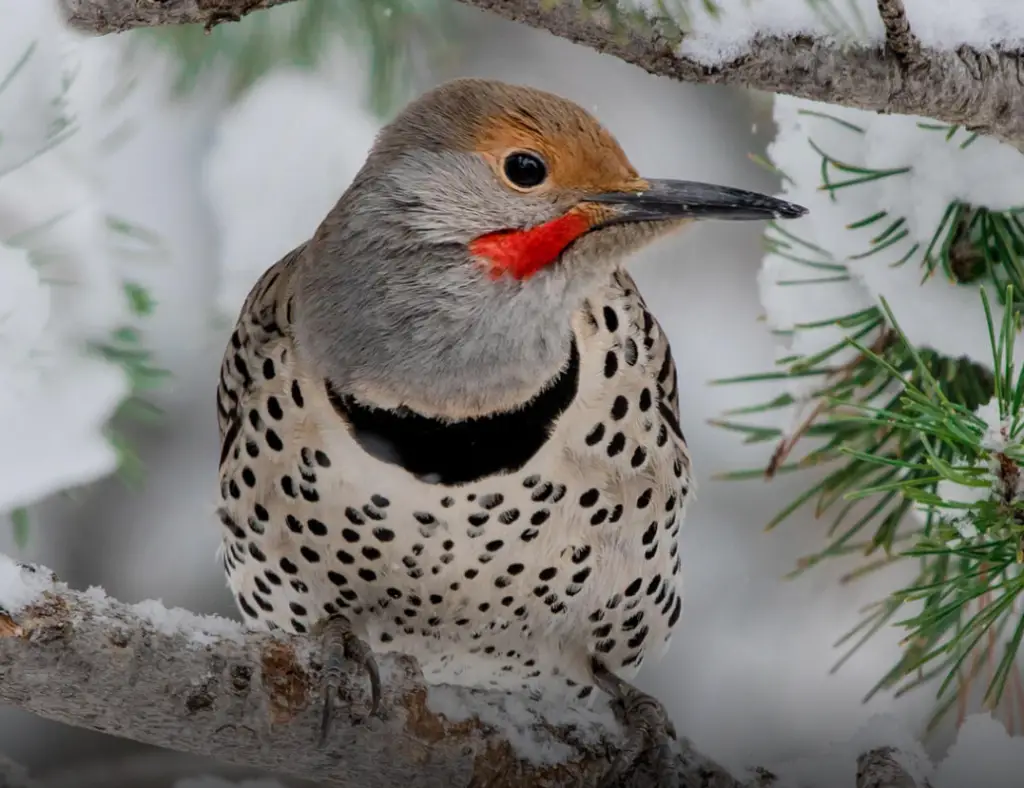
The Northern Flicker is a medium-sized woodpecker that can be identified by its black and white plumage. They have an olive back with yellow underparts and black stripes on their face.
These birds feed on insects by pecking at them with their strong beaks, but they will also eat seeds and fruits if available. The male has red markings on his throat, while the female lacks these markings completely but still shows some degree of coloration due to her olive back.
Northern Flickers are cavity nesters and will often use old woodpecker holes to nest in. They are monogamous birds and the male helps incubate the eggs and take care of the young chicks.
These woodpeckers can be found throughout Mississippi State during the breeding season. They will migrate south in the winter months when food becomes scarce!
Northern Flickers are attracted to sapsucker holes that they drill into large trees and will feed on the sap that oozes out of these holes. You can also attract them by putting up a bird feeder that offers a variety of food options, such as suet, seeds, and fruit. Be sure to keep your bird feeders clean so that the woodpeckers don’t get sick!

Pileated Woodpeckers
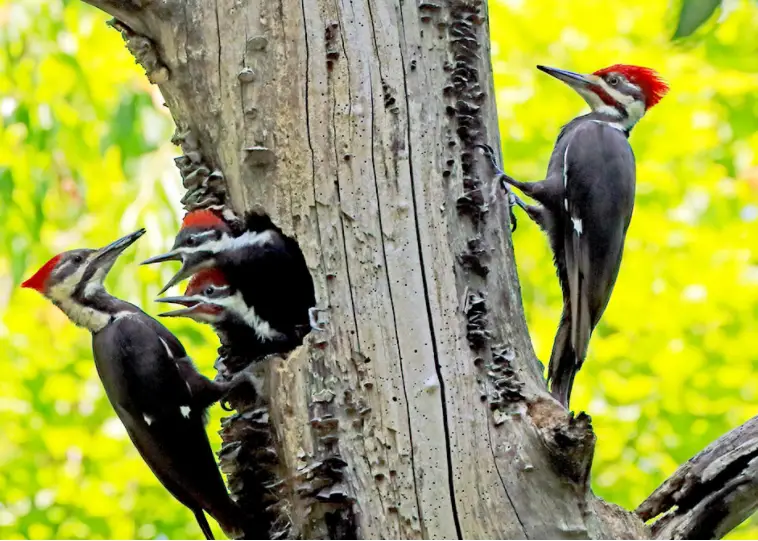
The Pileated Woodpecker is a large woodpecker that can be identified by its black and white plumage. They have an olive back with yellow underparts and black stripes on their face.
The male has red markings on his throat, while the female lacks these markings completely but still shows some degree of coloration due to her olive back.
Pileated Woodpeckers are the largest woodpecker in North America and can be up to 20 inches long! They are found mainly in deciduous forests, but can also be found in other types of habitats such as wetlands and orchards.
These birds feed on insects by pecking at them with their strong beaks, but they will also eat seeds and fruits if available.
Pileated Woodpeckers are cavity nesters and will often use old woodpecker holes to nest in. They are monogamous birds and the male helps incubate the eggs and take care of the young chicks.
These woodpeckers can be found throughout Mississippi State during the breeding season. They will migrate south in the winter months when food becomes scarce!
Pileated Woodpeckers are attracted to sapsucker holes that they drill into trees and will feed on the sap that oozes out of these holes. You can also attract them by putting up a bird feeder that offers a variety of food options, such as suet, seeds, and fruit.

Related article: Types of Woodpeckers in Rhode Island
Downy Woodpecker
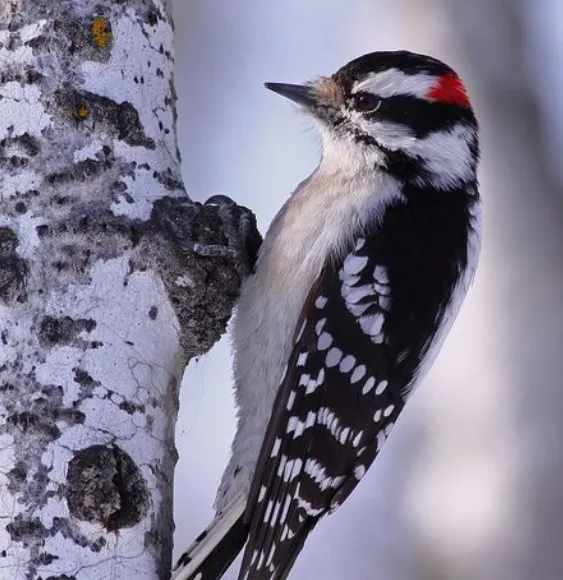
The Downy Woodpecker is a small woodpecker that can be identified by its black and white plumage. They have an olive back with yellow underparts and black stripes on their face.
The male has red markings on his throat, while the female lacks these markings completely but still shows some degree of coloration due to her olive back.
Downy Woodpecker is cavity nesters and will often use old woodpecker holes to nest in. They are monogamous birds and the male helps incubate the eggs and take care of the young chicks.
These woodpeckers can be found throughout Mississippi State during the breeding season. They will migrate south in the winter months when food becomes scarce!
Downy Woodpecker is attracted to sapsucker holes that it drills into trees and will feed on the sap that oozes out of these holes. You can also attract them by putting up a bird feeder that offers a variety of food options, such as suet, seeds, and fruit.

Red-cockaded Woodpecker
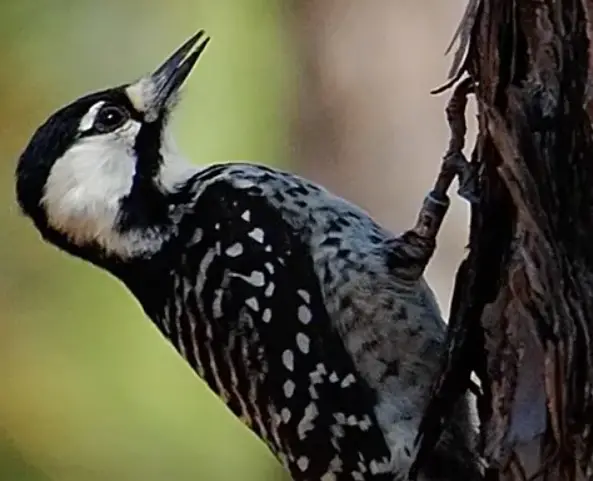
Red-cockaded Woodpeckers are cavity nesters and will often use old woodpecker holes to nest in. They are monogamous birds and the male helps incubate the eggs and take care of the young chicks.
These woodpeckers can be found throughout Mississippi State during the breeding season. They will migrate south in the winter months when food becomes scarce!
Red-cockaded Woodpeckers are attracted to sapsucker holes that they drill into trees and will feed on the sap that oozes out of these holes. You can also attract them by putting up a bird feeder that offers a variety of food options, such as suet, seeds, and fruit.

Hairy Woodpecker
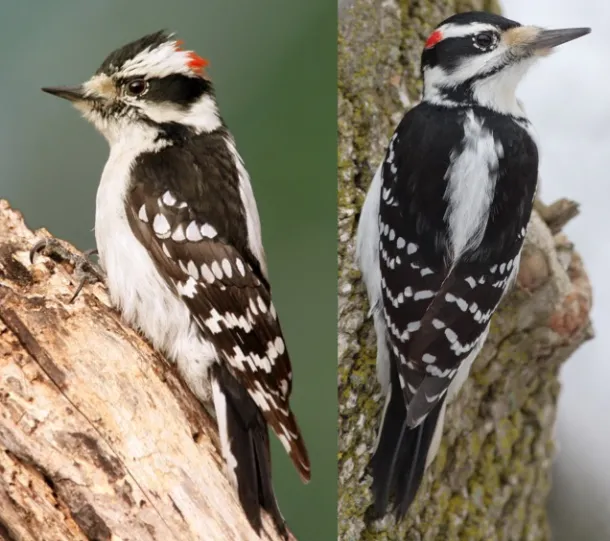
Hairy Woodpeckers are cavity nesters and will often use old woodpecker holes to nest in. They are monogamous birds and the male helps incubate the eggs and take care of the young chicks.
These woodpeckers can be found throughout Mississippi State during the breeding season. They will migrate south in the winter months when food becomes scarce!
Hairy Woodpeckers are attracted to sapsucker holes that they drill into trees and will feed on the sap that oozes out of these holes. You can also attract them by putting up a bird feeder that offers a variety of food options, such as suet, seeds, and fruit.

Conclusion
Woodpeckers can be found throughout Mississippi State during the breeding season. They will migrate south in the winter months when food becomes scarce! You can attract these birds by putting up a bird feeder that offers a variety of food options, such as suet, seeds, and fruit.

An avid ornithologist, zoologist and biologist with an unwavering passion for birds and wild animals.
Dr. Wilson’s journey in ornithology began in childhood and led him to obtain a Ph.D. in Ornithology from the prestigious Avian Research Institute. He has worked closely with renowned experts in the field and conducted extensive research and field studies globally.

